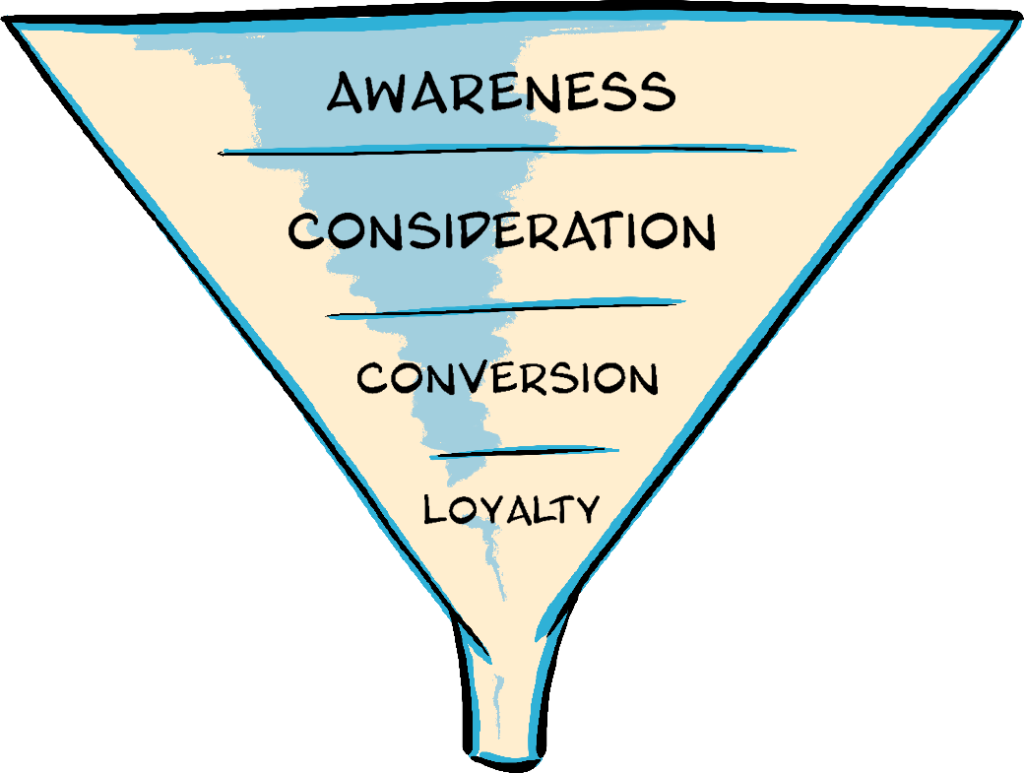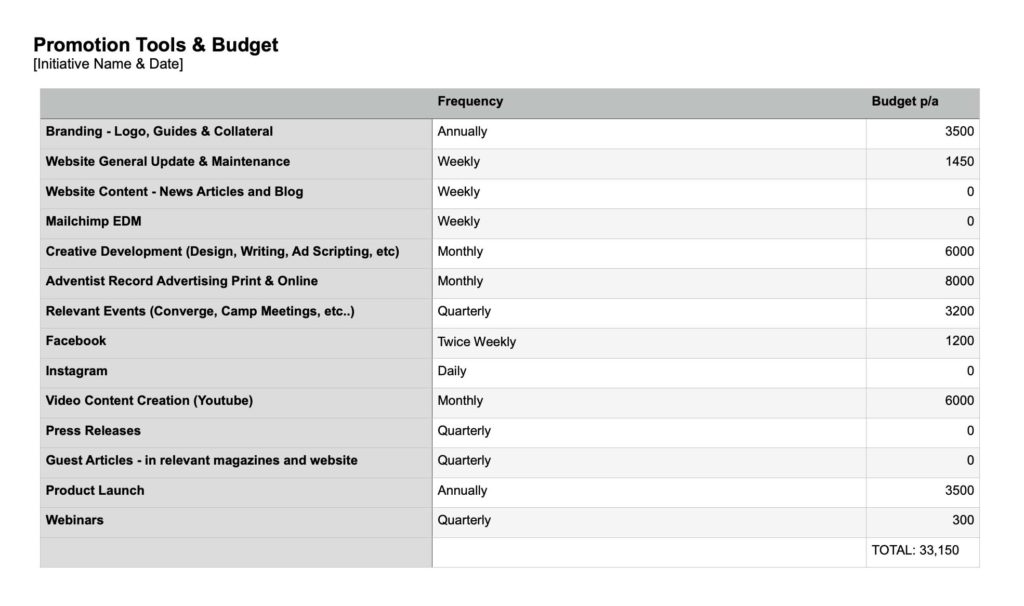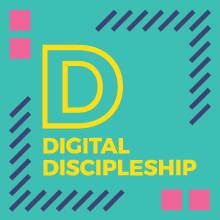Ministry Marketing Guide
A simple guide to marketing in the ministry space.
As workers in God’s vineyard, we are often required to create and develop new ministry initiatives. One of the best things you can do to help your initiatives succeed is to gain a basic understanding of marketing. We believe this marketing guide will provide you with a framework for developing and promoting ministry-related initiatives. In this guide, we will refer to these initiatives in different ways (product, service, event, project, etc..). Regardless of what shape your initiative may take, you can still apply each of the principles in this guide to your idea.
Why is Marketing Important?
The question may sound rhetorical, but really understanding the function of marketing is crucial to making the most of it. Listen to this conversation about how marketing impacts your initiative from the very early stages of conception.
With Shaylee Walsh & Maddy Voinea.
“Whatever you do, work heartily, as for the Lord and not for men…”
Colossians 3:23
Marketing
/ˈmɑːkɪtɪŋ/
noun
the action or business of promoting and selling products or services, including market research and advertising.
The Marketing Journey
The marketing journey begins much earlier than many professionals would like to admit. Before you have an idea, you should already have started on the marketing journey. Why? Because before you can produce something of value, you must first understand your customer, their needs, and how you can communicate with them. There are 4 main stages in the marketing journey. Preparation, Strategy, Implementation and Feedback (Learning & Growing).

Let’s get started!
This guide has been designed to take about 45 minutes. So grab a cuppa and let’s dive in.
Stage 1: Preparation

We know you want to get straight into getting your product out there. But before we have even developed a product, we first need to listen and learn. The Preparation stage will help you to clarify the problem or need you are addressing with your idea (at this stage only a concept on a napkin) as well as the group of people who will benefit from it.
If you already have an idea or concept in mind (E.g. To develop a health app, to deliver online discipleship training, etc..), you may begin learning about and defining your potential customers and their needs. There are two key components to this preparation stage: Market Orientation and Research.

Question: In Luke 14:28-30, Jesus uses the imagery of a man starting a construction project, unable to complete it. In light of this passage, what should our attitude be toward developing new ministry initiatives?
Market Orientation
Spend some time identifying your ideal customer and clarifying how your initiative will be valuable to them. Clearly identify your target market; demographic, interests, average income, etc.. Study potential competitors to determine how they may already be solving the problem your initiative is addressing. Establish whether the market is saturated (too many established competitors). Begin creating a detailed avatar or persona of your ideal end user. All of this information will help to clarify exactly who you are building this project for (the people you want to reach) and how it will solve the problem or need in a unique way (point of difference – you will get to work on this in a later section).
Target Market
A target market is a group of potential customers or beneficiaries that you identify in order to promote your initiative to them.
Identify Target Market

Action: List your target market descriptors. E.g.
- Adventist Women
- 18-25
- Students or young professionals
- Living in urban centres
- Regular church attendee
Study Competitors

Action: Find at least 3 competitors or competing initiatives who are trying to solve the same problem. Research their offering until you feel you understand it well. How does your initiative compare? In what ways is your solution unique? The answers to these questions will help you find your “point of difference” or “unique value proposition” (more to come on this).
Create Your Avatar

Action: Describe your avatar vividly. E.g.
Passionate, creative, outgoing. She loves Jesus. Likes to strike up conversations and enjoys the company of a diverse group of friends. She enjoys reading and often shares good articles and books with her friends online and in person. You will find her at relevant events and she follows relevant online influencers.
Action: Compile the above action tasks into a document. Here’s a draft Marketing Plan Template you can use (to download the Word document, right-click on the link and select “Download Linked File”). By the end of this guide, you will have come a long way to creating a draft marketing plan.
WARNING: Your target market/audience and your avatars are largely based on assumptions about who you think will benefit from your initiative. These elements introduce a strong bias in your marketing, shaping your messaging and the channels you choose to use. In reality, your target market and avatars may end up looking surprisingly different from your initial assumptions. In stage 4, we will discuss how you can mitigate for this bias.
Question: How was Jesus intentional and selective about who he ministered to?
Research
Conduct both qualitative and quantitative research against the assumptions in your business plan. If you don’t yet have a business plan, take some time to complete a one-page Mission Canvas (to download the PDF, right-click on the link and select “Download Linked File”).
Together with your team, create a list of questions that you need answered to confirm that your concept has legs. There are a plethora of online tools you can use to gather the information that will provide with the insight you need.
So what does this look like? Let’s look at an example. If your target market is comprised of health professionals, you may want to conduct in-depth interviews with health professionals to gauge their interest in your concept. Ask them in what way they they would benefit from your idea, and about specific features or elements they would like to see included. Using government and commercial data, find out how many health professionals exist in your target area and calculate the percentage of health professionals that would need to adopt your product in order for your initiative to be viable.
The following research methods will reveal a wealth of information which you can use to strengthen the value of your concept.
Qualitative Research Methods
In-Depth Interviews
Participant Observation
Lifestyle Immersion
Real World Dialogue
Focus Groups
Case Study
Quantitative Research Methods
Surveys & Polls
Longitudinal Studies
Correlational Research
Commercial Information
Government Resources
Internet Data & Analytics
Action: From the above lists, select the research methods which are appropriate to your initiative. Add these to your draft marketing plan.
Stage 2: Strategy

Strategy is the engine room. This is where things start to get exciting! We are still in the early stages though.
Once you have oriented your concept towards a target market, and tested it with research, it’s time to develop a marketing strategy. This is where you apply the learnings from the preparation stage. In this stage, you will analyse and segment your target market. This will help identify channels by which to reach each segment. You will also refine your business plan to take advantage of opportunities in the market. This stage can be broken down into segmentation, targeting and positioning.

Question: In Mark 7:36, Jesus heals a man and then forbids him to tell people about it. What does this tell you about Jesus’ ministry strategy?
Market Segmentation
The practice of market segmentation refers to dividing your target market into approachable groups. You can then target each segment or group with tailored messaging and promotion. Be specific and list several groups.
Continuing the example from above (See ‘Identify Target Market’), ‘women ages 18-25’ may be segmented into ‘Students’ and ‘Young Professionals’. You may also want to segment by city. So one of your segments may be ‘Students in Sydney’. Now this group becomes much more approachable as there are specific channels that you can use to reach students. This level of detail is necessary in the following sections where we identify communication channels and tailored messaging for this particular group or segment.
Action: Analyse your target market and create several approachable segments (refer to the following example).
Segment 1
- University Students
- 18-22y
Segment 2
- Working Professionals
- 21-25y
Question: How did Jesus tailor his message for his listeners?
Targeting
With our segments clearly defined, we can now create a strategy for how we will reach them. Look for communication channels that these specific groups consume, subscribe to and are active on. Do they follow specific influencers, read certain blogs or attend certain events? Make sure that you are engaging at each stage of the marketing funnel (see figure below). Below you will find some of the many tools you can use at each stage.
Marketing Funnel
A model showing how a particular customer transitions from awareness to brand loyalty.

Awareness
Advertising Traditional & Online
Influencer Promos
Product Placement
Event Booths
Consideration
Website Content
Social Media Presence
Promotional Videos
Retargeting
Conversion
Reviews & Testimonials
Free Trials & Demonstrations
Call to Action
Loyalty
Customer Experience
Loyalty Programs
Community
Action: Make a list of tools you would use at each stage of the marketing funnel.
Positioning
Market positioning is about reflecting on your point of difference and clearly articulating where your idea fits among other offerings in the marketplace. This step may prompt you to make changes to your concept so that it better fits an existing opportunity (un-met need).
Here is an example: If you are creating a discipleship course but there are already several well established courses available, you may choose to position yourself within a niche (discipleship in an urban context). Everything you have learnt so far will help you adjust your approach to better meet an existing need.

Market Opportunity
Finding that gap in the market is like coming across an existing problem that isn’t being addressed.
You don’t necessarily need to adapt your product to a market opportunity, however it is important to know if you are entering a saturated market. That way, you will be expecting resistance and can adapt your strategy accordingly.
Action: We have already introduced the terms ‘Point of Difference’ and ‘Unique Value Proposition’. It is time to articulate the unique value of your idea. Create statements for the following:
- Market Opportunity (a market need not addressed by competitors):
- Unique Value Proposition (Straight-to-the-point statement about the benefit you offer users/beneficiaries):
- Point of Difference (how is your concept different from that of competitors?):
Question: Think about the history of cultures and religions. How was the birth of Christianity geographically and historically positioned for maximum impact?
Stage 3: Implementation

This is where the fun begins. The Implementation stage is where we get to apply everything that we have leant so far. The four Ps of marketing implementation are Price, Place, Product and Promotion. The aim is to try to align all of these elements to your target market.

Price
How much does it cost? Is it value-for-money or premium/luxury? Your price will dictate your advertising and messaging. Make sure that it is accessible to your target market. Your price will also heavily determine the nature and scope of your product or service. If your target market can only justify $200, but your concept costs $600 to build, then you must find a way to bridge that gap. Also, your business model may be such that the beneficiary is not the one paying. The cost may be incurred by sponsors, donors, investors, advertisers or partners.
Here’s an example of a Price/Cost statement: The online discipleship course will be a one-off cost of $49 paid directly by the customer/beneficiary. Enterprise licences will be available. These will be charged at different rates according to a cost per seat matrix.
Action: Decide what cost structure you will adopt:
- Fixed price
- Subscription
- Licensing
- Paid by advertising
- Donors & Sponsors
- Other
Action: Create a cost/price statement outlining who will pay, how will they pay, and how much.
Question: In Acts 15, the early church was facing a problem. Gentiles were being pressured to observe many Jewish practices. The response of the church in verse 28 adopts a simplifying and bare bones approach. When creating ministry initiatives, how might we ‘not overburden’ our beneficiaries, in terms of cost or effort?
Place
Where will I get the product? The location of the transaction is an important factor. Is it easily accessible to your customer? Is it online, on-demand, or only available at a specific time? Does your audience have a positive association with the location? Will your target market feel comfortable in that space or setting?
Here’s an example of a Place/Location statement: The online discipleship course will be available anytime via the course website. Access to the course will be provided immediately upon payment via the online portal. The print version of the course will be available to purchase via all major online book stores (Amazon, Booktopia, Barnes & Noble, etc..), printed and distributed on-demand through Tablo.
Action: Clearly outline where and when – in physical or digital space – the transaction or delivery will occur. It may be at a local book store during trading hours, at a specific date and time in a crowded stadium, or online via a digital platform. There may be multiple places and times of delivery.
Product
By now I hope it has become clear how a good marketing plan helps you develop a product that fulfils a real-world need. Most people start by developing a product or service and think of marketing as something that happens once the product is completed. However, everything we have leant so far are things that you need to know before developing your initiative. It is now time for you to develop your idea from a concept on a napkin into an MVP (Minimal Viable Product).
Minimal Viable Product
An MVP is the simplest version of your product with just enough features so that it is usable by early adopters who can provide feedback for further development.
Action: Put down your draft marketing plan for a minute, get your team together and develop your product. If you need any help, SPD Innovation have plenty of resources, like workshops and design sprints, that you can do with your team to encourage creative thinking and collaboration. We would love to support you in developing robust and innovative ministry initiatives. Once you have a minimal viable product or service, include a detailed description in your marketing plan.
Question: How has the marketing journey shaped your MVP?
Promotion
We have finally arrived at the part where we get the message out there! We have thought it through, we have a strategy, we have used a number of different models (such as funnels and avatars) to make sure we don’t miss anything important and you have a robust MVP ready to launch. Now it is time to get creative with your promotion and advertising.
The most important component of your promotion will be your messaging. What language, tone and message are you using to connect to the different segments in your target market. Think of promotion as much more than advertising, or worse, informing. You can involve your audiences in inspiring conversations in your field months before you ask them to buy, subscribe or attend.
Here are some of the things on your promotion task list:
- Develop your brand
- Craft tailored messaging for each market segment
- Develop engaging creative for each message
- Establish communication channels
- Create a content schedule of all your promotional activities
Let’s get creative!
Here are some marketing elements you may want to consider investing in.
- Logo
- Website & Emails
- Social Media Presence
- Google My Business
- Branded Stationary
- Photo & Videos
- Posters & Flyers
- Branded Clothing
- Banners
- Press Releases
- Print Ads
- Online Ads
- Magazine Articles
- Influencer Contracts
- Product Launch
- Video Tours
- Live Demonstrations
- Guerilla Marketing
- Webinars
- Podcasts
- Collabs
- EDM
- eBooks
Action: Create a table (see following example) with all the promotion tools you plan to use, their frequency, and how much each will cost.
Click here to download the word document.

Digital Discipleship Resources
Run by the Adventist Media Network, Digital Discipleship exists to create, inspire, encourage and resource disciples of Jesus Christ to share His love through their creativity and innovation in the digital space.
Although much of the content is intended to resource local churches, you can use the knowledge of relevant platforms and trends in marketing your initiative.
Question: The Gutenberg Press facilitated the explosive impact of the protestant reformation. Early Adventist pioneers took advantage of similar innovative and entrepreneurial opportunities. What opportunities does the digital age offer that could be used to promote missional initiatives?
Bonus Point: Traditional vs Experiential Marketing
Traditional marketing emphasises the features and benefits of a product or service. In contrast, experiential marketing is based around creating stimulating experiences for the consumer. An example of traditional marketing would be: a print advertisement for a vegan gluten stake outlining all the health benefits and different ways to prepare. An experiential marketing example for the same product would be a cooking class at an event using the product and engaging the audience in cooking and tasting the product. Experiential marketing can be very effective due to its immersive and user-driven approach. Think about how Jesus invited disciples into his ministry. Some of the invitations he used were deeply experiential: “Come and see” and “Follow me”. How can you present your initiative to potential users or beneficiaries in an experiential way?
Stage 4: Learn. Grow. Repeat.

We’re not quite done yet. Once your product is launched, you will want to listen to feedback from users, so make sure you have feedback mechanisms in place. Listen very carefully to how people are using or benefiting from your initiative, what they are loving about it and what they would like to see changed. Intentionally seek out and incentivise feedback from early adopters. This will grow your understanding of the unique value your initiative is delivering. Feedback will inform how the product matures, strengthens and develops, often in very surprising ways.
Earlier we mentioned how target markets and avatars are largely based on assumptions. These assumptions are necessary to get us started, however once your product is out there, you may be surprised by who will actually use your product and for what purposes. For example, a discipleship course that you designed for young creative female uni students may end up being used by chaplains in correctional facility services. These unexpected insights may open up entirely new ministry opportunities for your initiative. Go with it! The Holy Spirit is your partner and the Lord will go before you (as Moses encouraged Joshua in Deuteronomy 31:8). He desires that your ministry bear fruit and will guide you as you employ your energy and effort into his work.
Carefully document everything you have learnt from user feedback and implement appropriate changes in your initiative and next round of marketing.

Feedback Tools
Customer Surveys
User Reports
Polls
Reviews
Google Analytics
Tip: For best results, incentivise feedback from early adapters.
Remember: “As activity increases and men become successful in doing any work for God, there is danger of trusting to human plans and methods. There is a tendency to pray less, and to have less faith. Like the disciples, we are in danger of losing sight of our dependence on God, and seeking to make a saviour of our activity. We need to look constantly to Jesus, realising that it is His power which does the work. While we are to labour earnestly for the salvation of the lost, we must also take time for meditation, for prayer, and for the study of the word of God. Only the work accomplished with much prayer, and sanctified by the merit of Christ, will in the end prove to have been efficient for good.”
Desire of Ages, Page 362

Well done!
So there you have it, a simplified-ish guide to marketing your ministry product, event, or initiative successfully. Although these principles are commonplace in business contexts, they are rooted in a common sense understanding of people and how we interact with society, within the limits of our constraints (time, geography, finances, etc..). Preparation, Strategy, Implementation and Feedback are crucial to giving your initiative the best chance to succeed. At each stage in the process, remember to pause, bring your team together and pray. We labour, but it is God who brings the increase. Our labour is merely an act of worship, it is our privilege to serve God in ministry. We hope this brief guide will be useful in helping you market your next ministry project effectively. As we allow ourself to be humbly led by the Spirit and tirelessly work to see God’s kingdom grow, we can trust that he is going before us and our work is not in vain.
We need your help!
Please take time to fill out a brief 3-minute survey about this marketing guide.
Frequently Asked Questions
How much should I spend on marketing?
Most successful businesses spend between 10% to 15% of their overall budget on marketing. This includes staff wages, external contractors and operational expenditure. We would recommend that you allocate no less than 10% of your entire project to marketing.
How can I market my initiative effectively through the Seventh-day Adventist organisation?
As discussed in Stage 2, communicating to everyone in the organisation will prove difficult. Chances are, not all members are interested in what you are marketing. Segment your target market/audience into more approachable groups (E.g. Seventh-day Adventist university students). Having said this, there are a number of methods that you can use to reach a general audience.
Firstly, local conference communications staff and church communicators have the job of receiving and conveying information through official church news channels (local conference newsletters, church bulletins, conference email lists, etc…). Regional Unions, Missions and the South Pacific Division have their own channels (Adventist Record, social media pages, etc…). These channels are effective to reaching church staff, local leaders and some members. This method is most effective when the content is available in multiple forms (Record, Conference Newsletter, Conference FB Page, News Podcast, Announcement at conference events).
Secondly, you can promote your initiative through Seventh-day Adventists influencers (E.g. Adventist Review) as well as direct advertising online (E.g. Facebook look-a-like audiences).
I advertise through all the official church channels, but I’m struggling to get the message through. How can I get my message out there?
There are many reasons why your message is not getting through. Perhaps the channels you are using are not as effective at reaching members as expected. For instance, an email database may have every church leader in a region on the list, however it may only have a 30% open rate. On the other hand, maybe your message is getting through, but your messaging and creative lacks impact, or is not appropriate to that communication channel. Or, maybe your product needs more development in order to fit an un-met need.
We hope this guide has demonstrated how following every step of the marketing journey impacts the effectiveness of your marketing. For example, if your initiative solves a unique real-world problem better than anything thing else out there, it will be easier to communicate about it to your target market. Conversely, if your initiative is entering a saturated market, even with strong advertising and promotion, many people will still remain with their existing solution.
Which social media platform should I use?
Each social platform serves a unique purpose for the user. Facebook is used predominantly for social connections. Instagram is great for following influencers. So is Youtube, which is also a great library. TikTok is… well still finding itself to some extent. Clearly defining your market segments will help you decide which social platforms will connect best with that group of people. You may use Instagram to reach one segment and Facebook to reach another.
Do you have a question for us?
Fill out the 3-minute feedback survey above and let us know.
Want more?
If this guide has been useful and you would like more information on ministry innovation and marketing, sign up to our newsletter. We promise not to spam. You’ll receive an update with our latest resources and articles periodically. Also, feel free to reach out if you need support with your innovative ministry initiative. We would like to help you with training, mentoring, resources, design thinking workshops and funding. Looking forward to connecting with you.
Stay Connected!
Sign up to our mailing list to receive news and resources related to ministry innovation.


